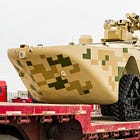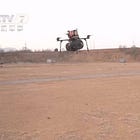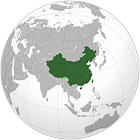Taiwan Reorganizes Reserve Forces Once More, Does Not Pursue More Fundamental Reorientation of Reserves
🇨🇳 🇹🇼
One of the most consequential steps that Taiwan can take to improve its defences concerns how it organizes, trains, equips, and deploys its reservists. In January 2024, Taiwan reinstated a twelve-month-long period of mandatory conscription following years of efforts to water down mandatory military service—which was ultimately manifested in just four months of military training—and transition to an all-volunteer force. Given Taiwan’s demography, economy, and the high cost of labour, a Taiwanese military that is fully composed of paid full-time volunteers would never be large enough to persevere against a Chinese invasion attempt, given the profoundly unfavourable trajectory of the cross-strait military balance. It is worth noting that Taiwan had a mandatory two-year conscription period until 2000, which was gradually lowered to one year in 2008. The last batch of eighteen-year-old conscripts to have begun a two-year term of service will be around forty-four years old as of this writing in October 2025, while the last batch of eighteen-year-old conscripts to have begun a one-year term of service will be around thirty-six years old as of this writing. Had Taiwan not reinstituted a more militarily meaningful conscription period in January 2024, the bulk of Taiwan’s more experienced non-ex-paid volunteer reservists would be forty or more years old by 2030.
Much can be said about how military reserves are organized, trained, equipped, and deployed. The widely observed poor quality of Taiwan’s reserves, which reflects the shortcomings of not just the Taiwanese military and Taiwanese military training but also the short duration of mandatory military service, has been the subject of extensive American criticism in recent years. Taiwanese decision-makers have made note of these issues. In May 2021, which is to say well before the full-scale Russian invasion of Ukraine in February 2022, Taiwan’s legislature passed legislation to establish the All-Out Defense Mobilization Agency, an organization charged with war preparation and civil defence efforts, including Taiwan’s civil defence handbook.
In January 2022, the All-Out Defense Mobilization Agency was assigned control of the Taiwanese military’s reserve units. This decision was reversed several times, which resulted in the recent decision to reassign reserve units to the military and reintegrate reserve units into the military’s prevailing theater command framework.
While the organizational framework in which Taiwan’s reservists and reserve formations matter, there is a case to be made that Taiwan would be best served by a fundamental reevaluation of the role of reservists in its military strategy. As indicated previously, there are many ways that Taiwan can organize, train, equip, and deploy its reservists. The single-most important factor at play is that Taiwan’s mandatory term of service, which is just twelve months, is far too short to produce a mass army of well-trained, let alone experienced, military personnel. Given this, Taiwan will be best served by a multifaceted and tiered reserve military force, which, for example:
Assigns some of the best—as assessed by their commanding officers under a more or less uniform grading framework—conscripts-turned-reservists to standing military formations with the aim of ensuring that all active duty units will be fully manned in time of crisis and war. In an ideal world, such reservists would be offered a financial incentive to be part of an “active reserve” in the manner of the American national guard and reserve systems. Such reservists need to undertake regular training and need to view such regular training as both an avocation and a part-time vocation, not something that they are required to occasionally do by law. This is, for example, an excellent way to ensure that all of the Taiwanese army’s brigades are fully staffed with trained and experienced drone operators, given the inherent consequences of a fairly short twelve-month term of service for the readiness of a conscription-reliant military.
There is scope for Taiwan to assign select personnel, particularly those who receive more specialized and more in-demand training, to an “active reserve” formation in the manner of the American national guard and reserve systems. This can allow for the establishment of, for example, multiple standalone drone companies or battalions garrisoned around Taiwan that can be mobilized as required, independently of the rest of the reserves. With regular training, something like one weekend per month and several weeks per year, the reservists assigned to such formations can be kept more or less up to date even if they had completed their military service several years prior.
Assigns the rest of the best conscripts-turned reservists that were discharged relatively recently to standalone units that, once mobilized, can function as any other “line unit,” such as a line infantry battalion or even as a line infantry brigade (if adequate equipment and regular/full-time staff are made available). In an ideal world, this grouping of reservists will also receive regular training, but training is not only disruptive to the lives of civilian reservists but also requires investment in resources and training capacity. Here, as elsewhere, in an ideal world, financial incentives would be in place alongside legislation to not only compel participation but also put in place social safety nets and ensure continued civilian employment despite the disruptions brought about by this type of reservist service.
Assigns the remainder of the non-specialist manpower to several tiers of reserves.
One tier, the largest tier, once the number of reservists increases over the coming years, can serve in territorial units that are expected to primarily set up defences around their area of responsibility in the event of war. This tier can include the oldest conscripts and can be used to bolster security around critical infrastructure.
Another tier can serve as an attrition reserve for the regular army. In an ideal world, this tier will include recently discharged personnel who are not assigned to one of the above tiers. In an ideal world, this tier of reservists will be assigned to a unit in which they previously served. One challenge associated with this particular tier of reserve is that the assigned reservist will eventually become older and, in terms of experience, less familiar with the latest practices and equipment of the regular/active duty military units to which they are assigned. Such reservists will, in most cases, ultimately have to be assigned to the general pool of reservists. Note, however, that attrition reserve units can be quite small, such as a battalion that is assigned to a division-sized unit or even a brigade-sized unit.
Conscription-based militaries have many quirks that do not accompany all-volunteer forces. Consider, for example, the Israeli military in general and the Israeli army in particular, which not only makes the most of its mobilized reservists but also relies on entire reserve battalions, brigades, and even divisions to fight in its preferred manner. To enable its reserve units to be more or less interchangeable with its active duty units, a dynamic that is ultimately enabled by a long term of service, the Israeli army will, for example, assign brand-new tanks to its one of its reserve units so that the most recently discharged batch of ex-conscript reservists, who are only experienced with the latest tank design and not the preceding design, can drive to their designated military base and be ready for combat within hours. If Taiwan wants to do something like the above and have more than a mass army of mobilized light infantry, it will have to make greater investments in, among other things, procurement—assigning all reservists second-tier, if not third-tier, equipment with which they are unfamiliar with not do. As the Israeli example, which is very unique, illustrates, conscription-based militaries can have many limitations and can be very difficult to manage if the country in question seriously intends to mobilize not just the most recently discharged cohort of reservists but also prior cohorts. All things considered, Taiwan will be best served by a more complex reserve system that makes the most out of available mobilizable manpower.
The uncomfortable reality of military affairs is that most military personnel do little and merely exist to fill out the ranks. While Taiwan will need proverbial legions of reservist infantry if it is to wage a fight to the death in every village, town, and city in the event of a Chinese amphibious invasion, Taiwan is unlikely to prevail in a war if it comes to that. To avoid such a fateful and, in effect, fatalistic gamble, Taiwan needs to make the very most out of the cohorts of moderately trained conscripts that will pass through its military. By tapping into the best-trained, most skilled, and most motivated discharged conscripts in a revised and necessarily more complex reserve system, Taiwan can more effectively employ a smaller, higher-quality, and higher impact pool of mobilized reservists for the defence of the island while still having a larger pool of mobilizable reservists to fight to the death in every village, town, and city if and when required. Among other things, it is important to bear in mind that a Chinese amphibious invasion will likely unfold in phases and will be spearheaded by a small subset of the People’s Liberation Army (PLA), which is to say some of its best-trained and equipped units. That is not a force that a large pool of mobilizable conscripts is best-suited to fight, absent major investments in reservist training and equipment, unless, of course, Taipei is willing to risk a very high casualty rate among mobilized reservists. There are also technological changes underway that are likely to result in a PLA that undertakes what amounts to an “unmanned amphibious invasion” of the island of Taiwan and, more generally, a PLA that launches hundreds, if not thousands, of drones, broadly defined, and other types of munitions more generally, to target Taiwanese military forces along the island country’s narrow western coastal plain. This is not a type of warfare for which Taiwan needs dozens of mobilizable reverse infantry brigades.
Some related posts:






